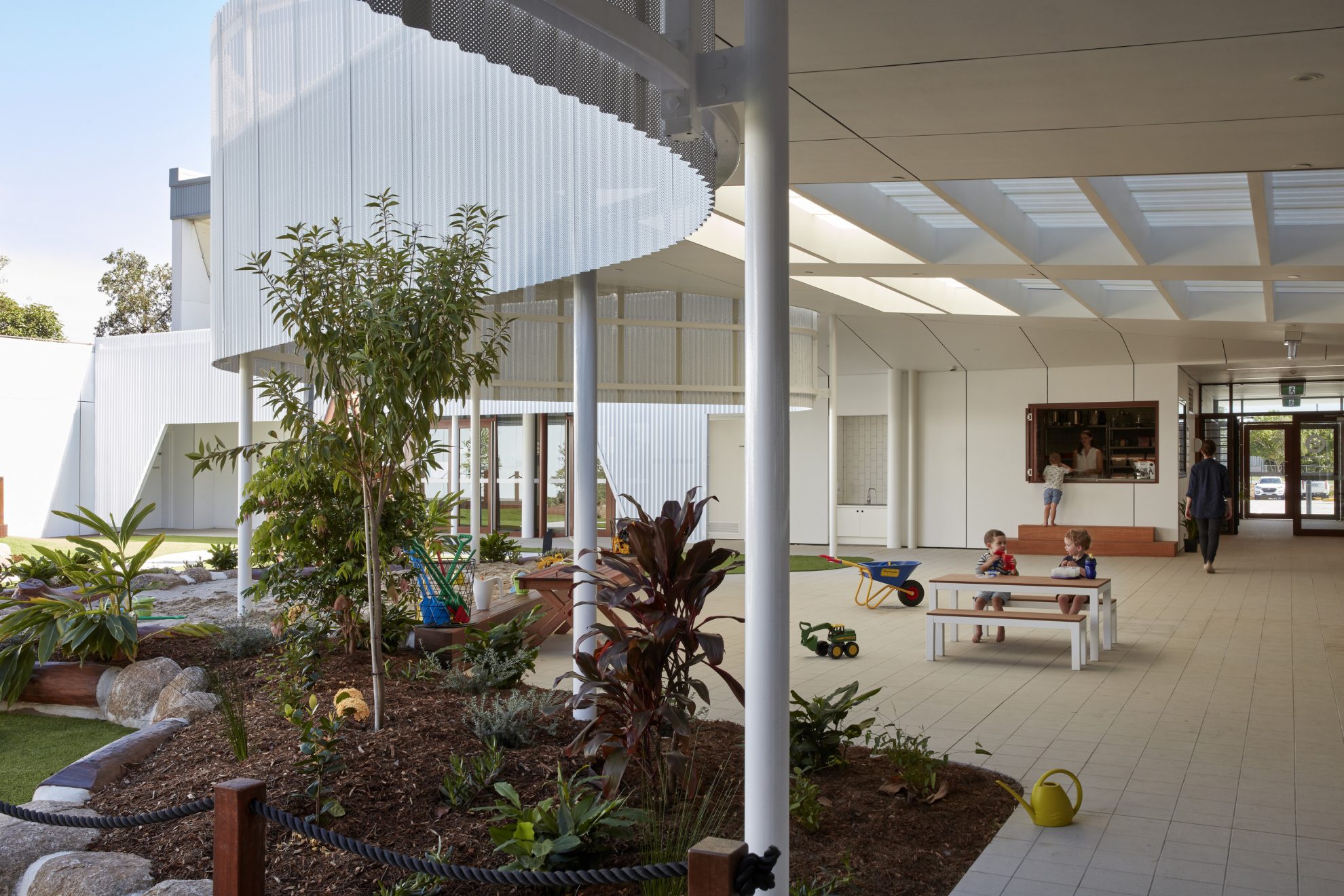From Warehouse to Classroom: Richlands Early Learning Centre’s Transformation
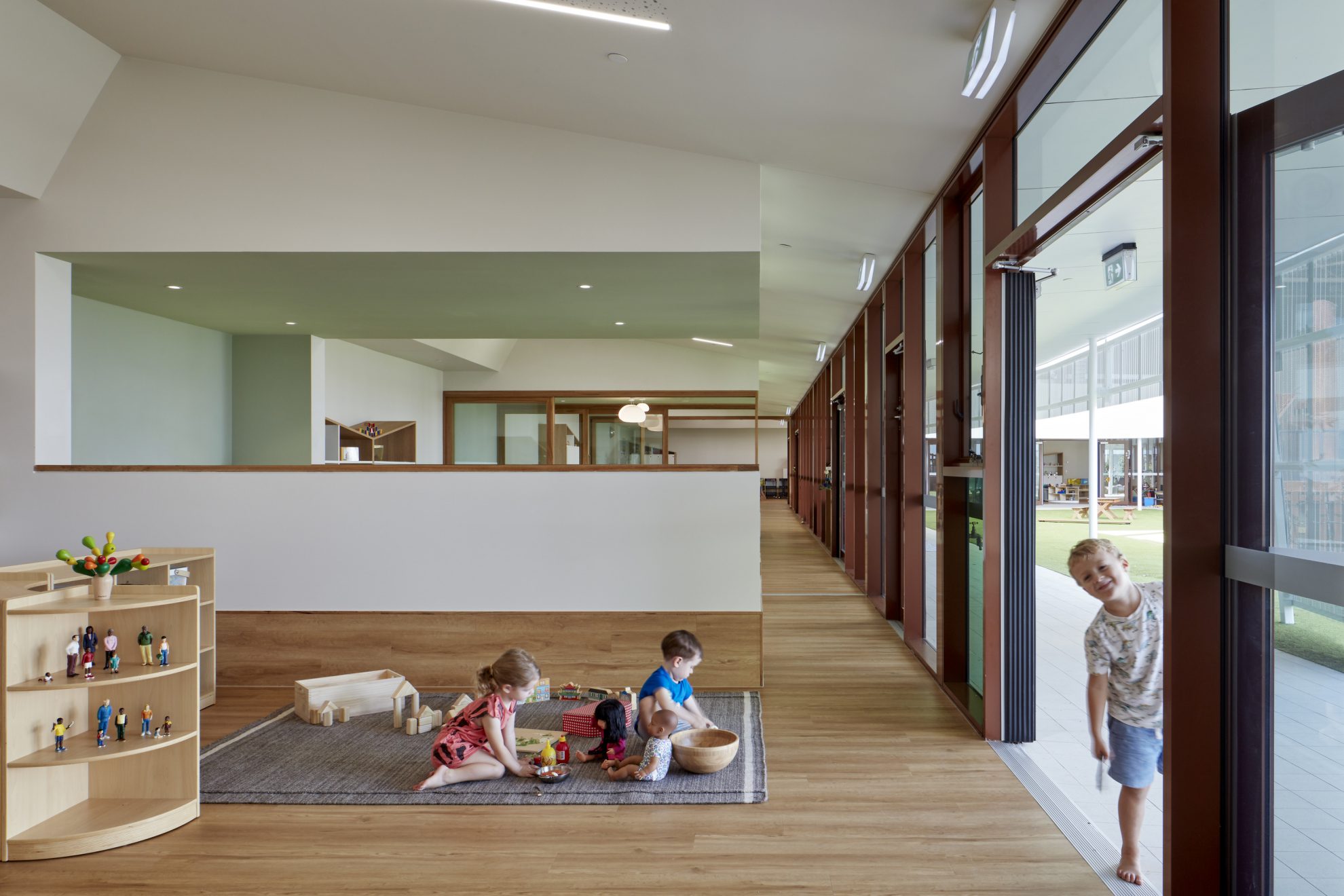
The Richlands Early Learning Centre exemplifies the power of adaptive reuse, transforming an underutilised warehouse building into a vibrant childcare facility. Rather than demolishing and reconstructing, the design preserved the existing structure, reducing construction waste to support a more environmentally conscious model of development.
The adaptive reuse of the former garden centre, once a dormant warehouse, provides a highly sustainable development model by retaining the embodied energy and carbon of the original building, bypassing the wasteful process of demolition and reconstruction.
The building industry contributes significantly to global resource consumption and carbon emissions—comprising 40% of timber use and 34% of global CO2 emissions. By reimagining the existing structure rather than reconstructing, the project helps to conserves non-renewable materials and reduces waste.
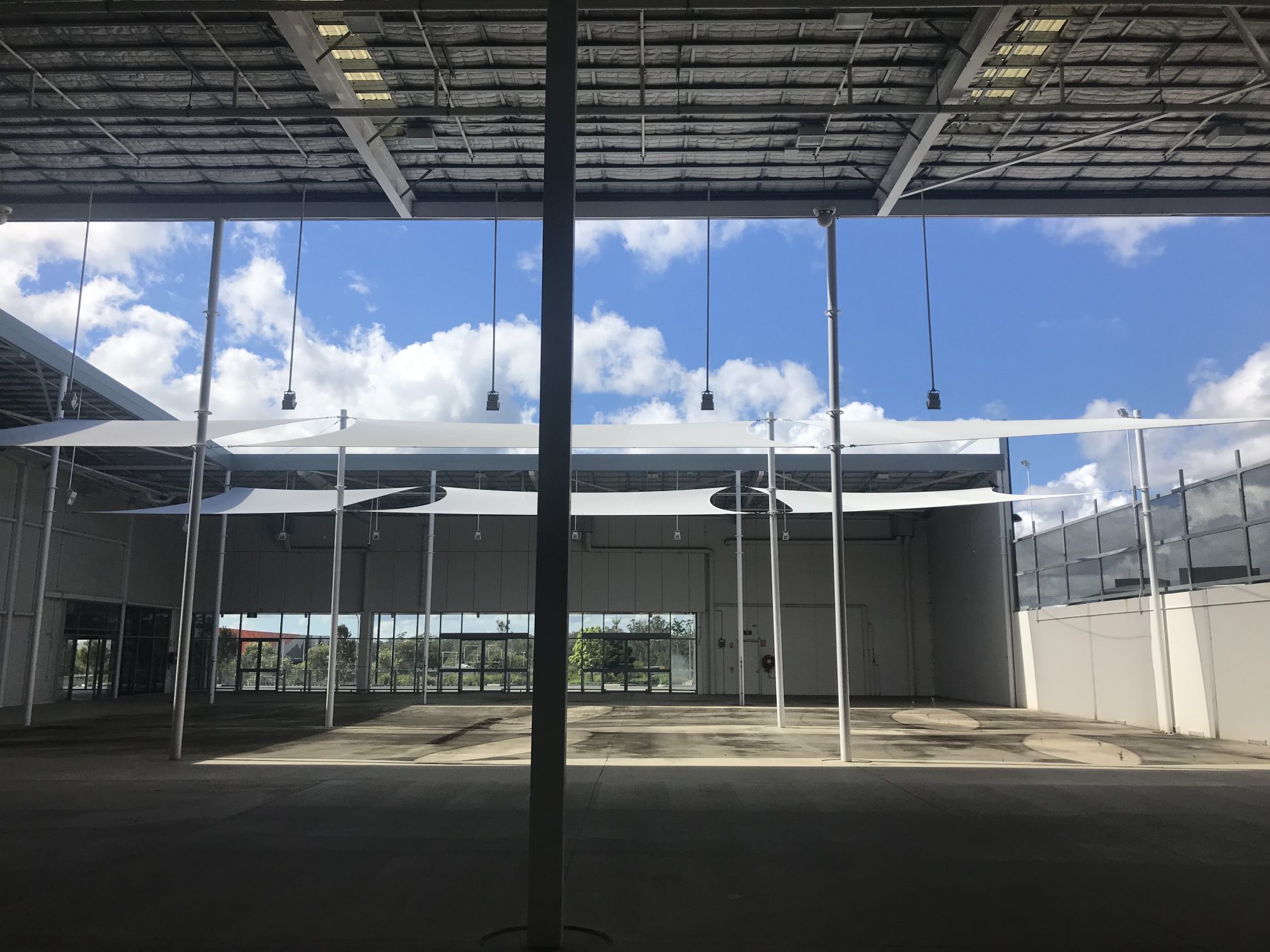

Above: Former warehouse
A key design element of the project is the ‘verandah-like’ space at the heart of the centre. Synonymous with Queensland’s lifestyle and climate the verandah not only connects key areas of the facility but also provides a shaded retreat, promoting interaction and a sense of belonging for children, carers, and parents. A perforated screen wrapping around the verandah filters natural light, establishing an interactive connection between the built environment and the natural landscape.
Internally, familiar, intimate scaled spaces and house-like forms are used to create the kitchen, nappy change stations, and storage to provide comfort and a sense of security for the children being cared for. The warm oak, pastel greens, and lofty white ceilings foster a calm, creative atmosphere for children’s learning and play.
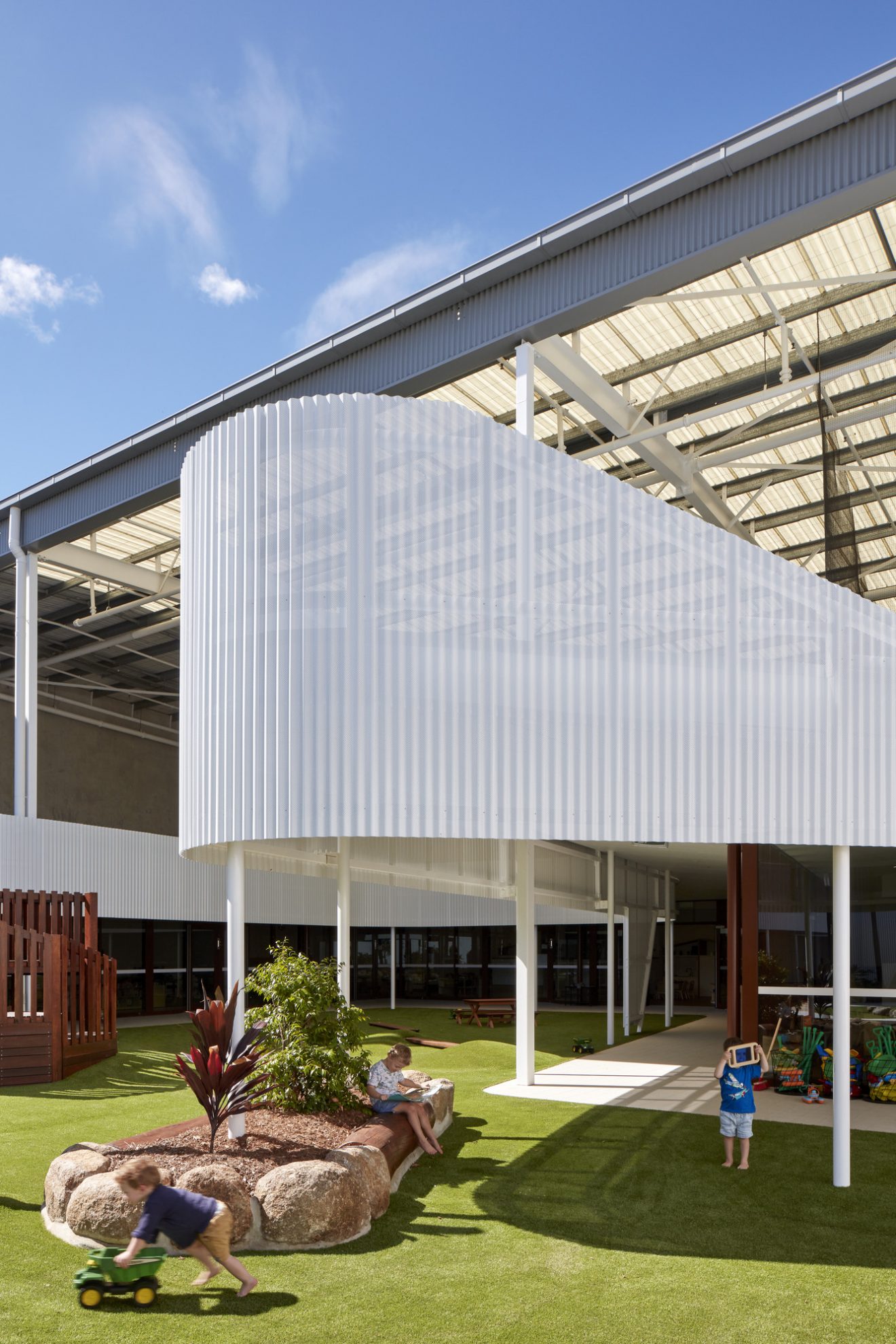
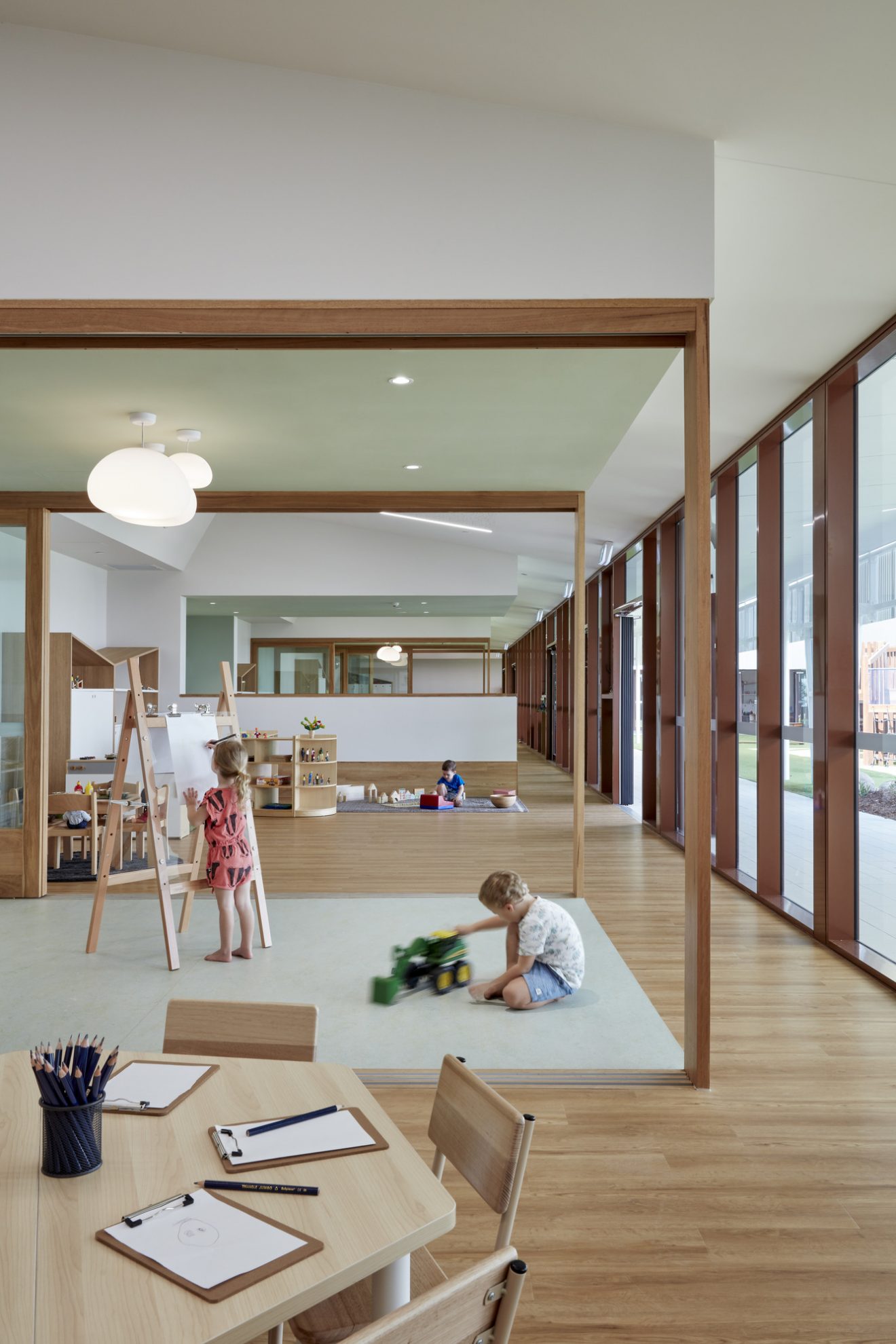
Enhancing both the learning experience and sustainability initiatives for the project vegetable gardens were integrated into the centre, engaging children with nature and fostering an understanding of food origins. This outdoor engagement aligns with research highlighting the cognitive and social benefits of nature-based learning.
The Richlands Early Learning Centre stands as a prime example of how adaptive reuse can create high-quality, sustainable spaces that are both community-focused and environmentally responsible. By reimagining existing structures, the project preserved the past while shaping a resilient future.
